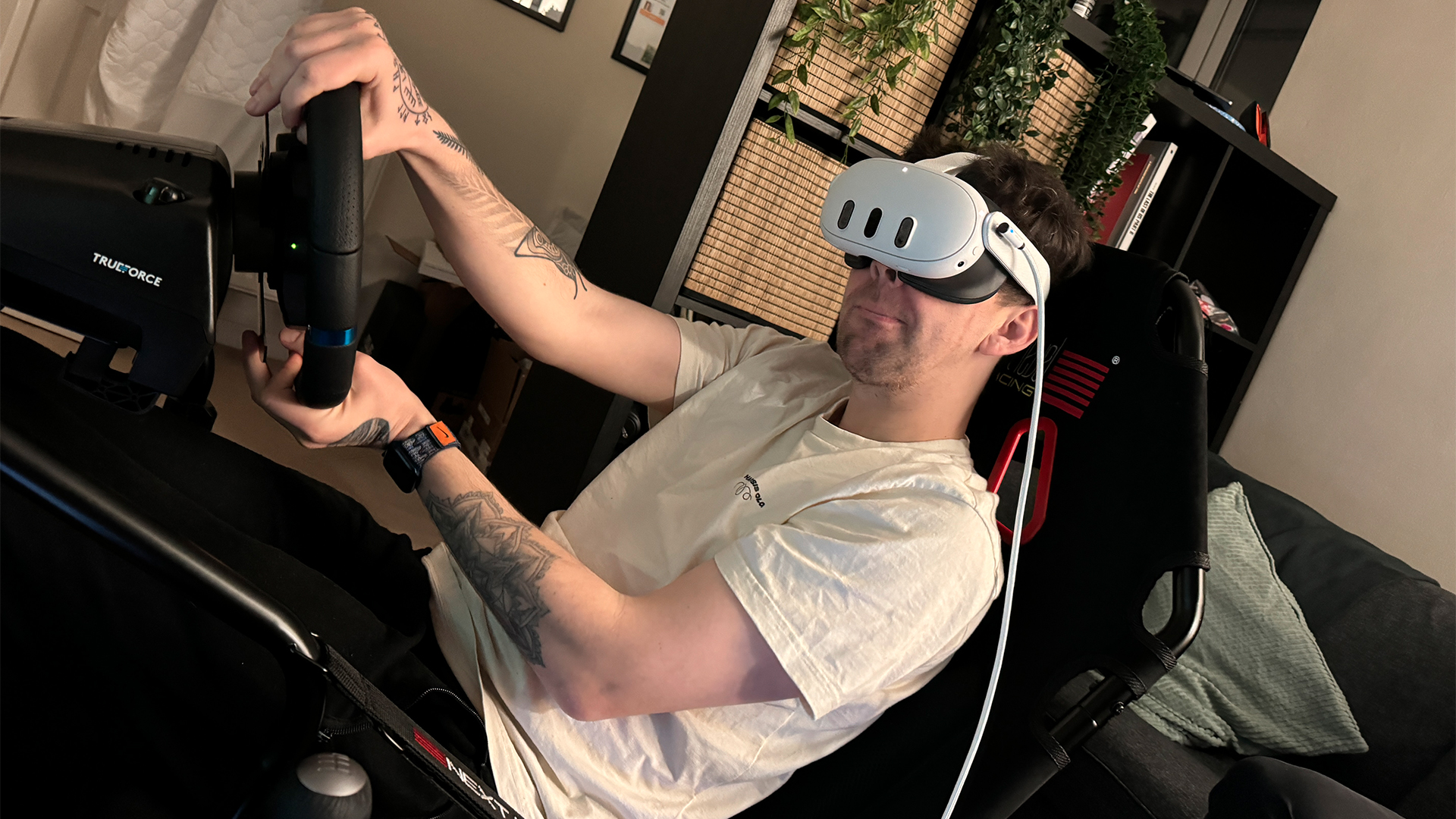
Something I definitely got from my Dad is a love for motorsport — the mechanical intricacies of each car has always fascinated me, and the underlying layer of the on track racing adds an element of captivating drama to every event that I can’t look away from.
Whether it’s your simpler moves like simply out-braking your opponent into turn one, or faking them into a defensive line with a poor exit and taking them with more speed on the way out of a chicane, this V8 game of chess has been a passion for me since playing the original Gran Turismo.
Anyway, speaking of the PlayStation racing staple, that love of motorsport extended to an adoration of sim racing — turning this sport into something accessible to all who cough up for a wheel and pedals. Playing on a traditional TV was already a great experience for me, but the moment I got the chance to make the transition to racing in VR, I took it and I’m never looking back.
What’s my setup?
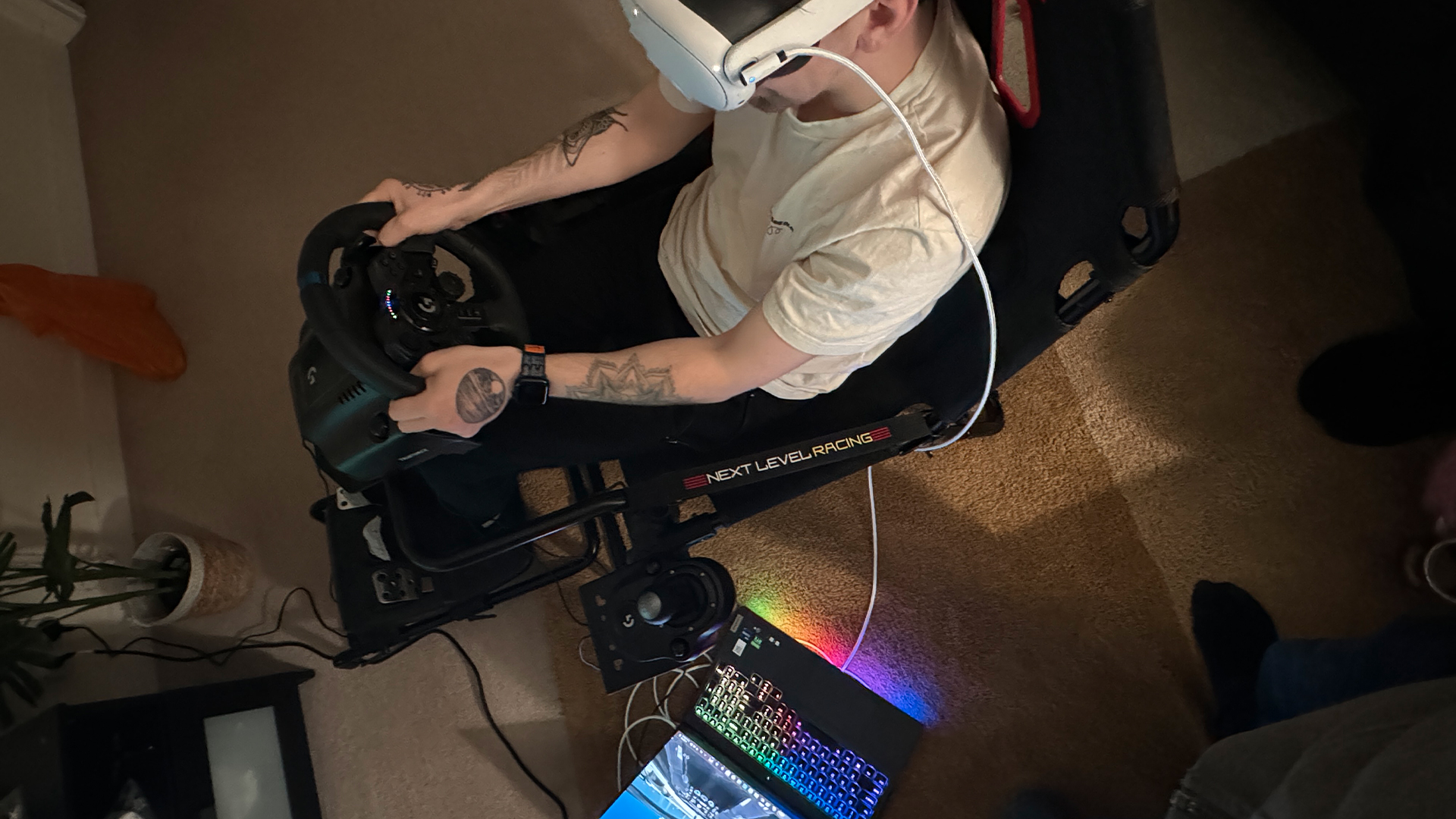
So before I begin, I know that VR sim racing isn’t cheap to get into. You just have to look at the fact that you’re spending over a thousand dollars to get the best Gran Turismo 7 experience with a PS5 and PSVR 2, and that’s on the lower end of getting great immersive racing.
With that in mind, I want to be transparent with the setup I have — a general mish mash of powerful gear and entry-level peripherals. It all starts with the Lenovo Legion Pro 7i Gen 8 and Meta Quest 3 headset, and let me safely assure you that the RTX 4070 in here is more than enough to run the likes of F1 23’s VR mode with medium graphics settings.
To connect it all, I could’ve gone with the rather pricey Meta Quest Link cable. But for half the price, you can snag JSAUX’s 5-meter link cable, which translates into so much more freedom of movement, while still supporting the fast data transfer speeds needed for gameplay.
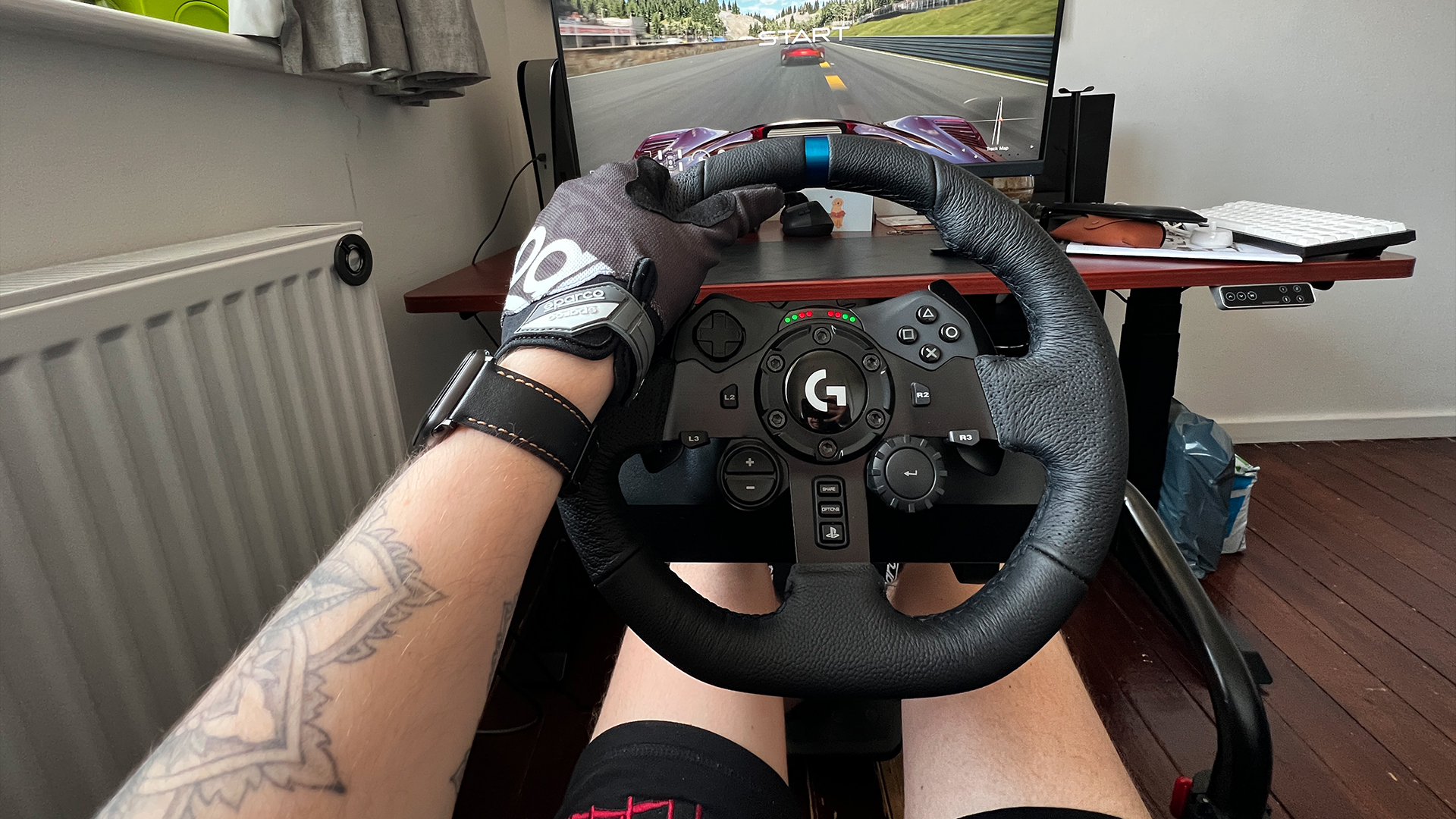
Moving over to the actual racing rig, you’ll find the Logitech G923 wheel and pedals attached to the Next Level Racing GTLite seat. Basically, this is one of the cheaper ways to get a sim seat, and one that is easier to pack away into a cupboard when not needed.
Finally, if you have sensitive hands like mine (don’t laugh), that’s where my Sparco Meca-3 gloves come in. Technically, they’re mechanic gloves, but they offer better durability and grip than any other more expensive sim-specific gloves I’ve tried. For a better grip on the pedals, I have a pair of Sparco Hyperspeed gaming socks — purely out of my own refusal to buy garish sim racing shoes.
In the hot seat
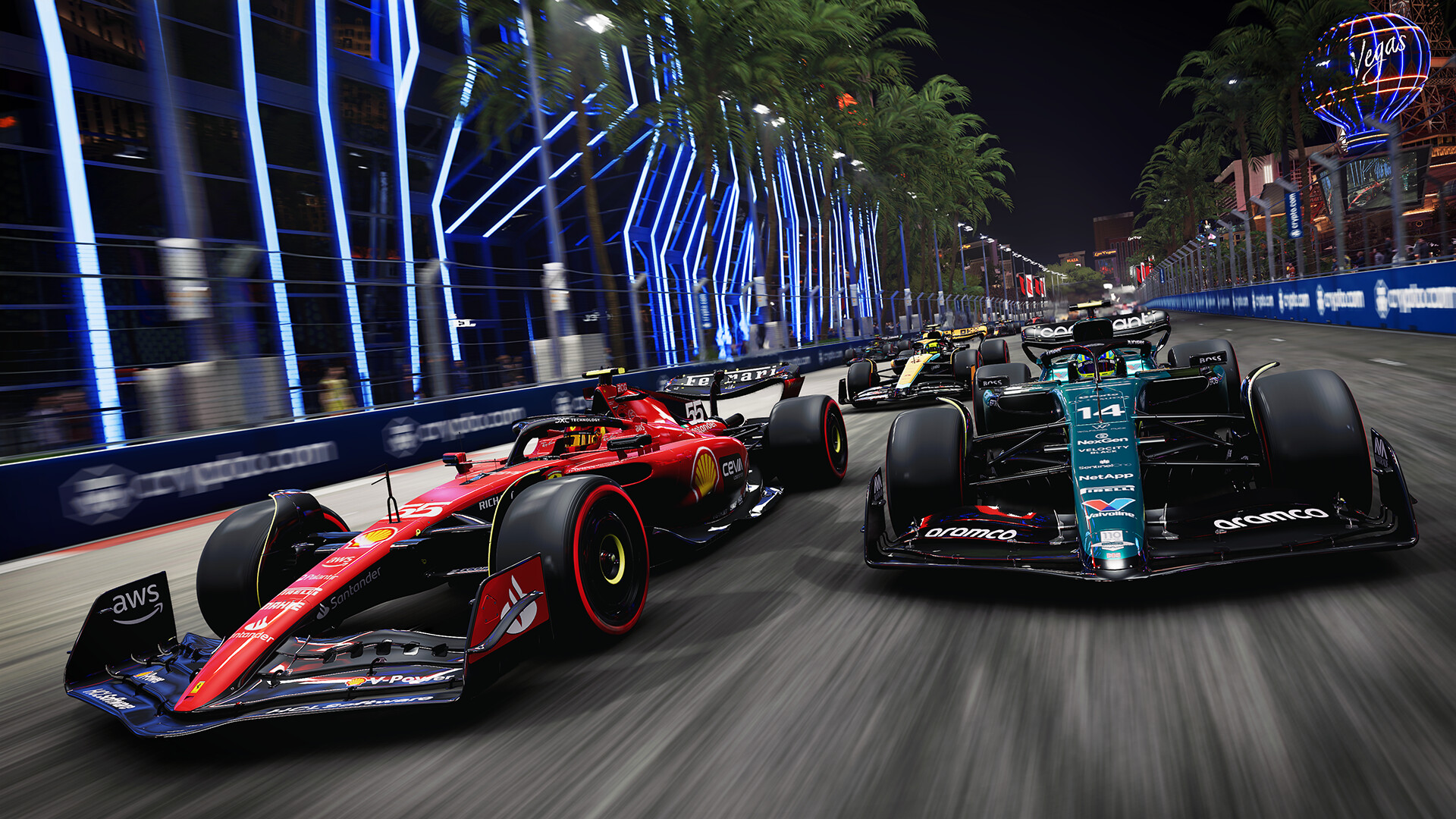
This hasn’t been my first real exposure to VR racing, as I did jump on a GT7 competition at IFA 2023 (spoiler alert: I beat them all). That glimpse gave me a hunger to recreate the experience for myself, and I went the PC route to get a wider array of sim experiences I enjoy: F1 23, DiRT Rally 2.0 and Assetto Corsa Competizione (ACC).
So I settled in, and after a relatively pain-free setup process of connecting cables and connecting the Quest 3 to Steam VR, I was in. And after going through a quick season of F1 23, I fell quickly in love.
There’s immersive gaming, and then there’s this — a simply jaw-dropping experience that may be distracting at first. Trust me when I say you’ll get caught out watching everything pass you by looking left and right, only to then miss a braking point and go careening into a wall.
But once you get over that initial shock, the feeling of being sat in the car and putting the pedal to the metal in VR is unmatched in all of my years of gaming. Whether it’s watching obstacles like houses or trees breeze past you in DiRT Rally 2.0, or seeing all the minute details of the inside of your GT World Championship car in ACC, every second is incredible.
Once you get over that initial shock, the feeling of being sat in the car and putting the pedal to the metal in VR is unmatched in all of my years of gaming.
But it’s not just because of the immersion of this experience compared to playing on a standard screen, it’s the racing behaviors you realize you miss out on. For example, when braking and turning into a corner, it’s best to keep your eyes locked on the part of the apex that you’re steering towards. This element of VR sim racing helped me experiment with carrying more speed into every corner and start to extract the most out of every sector.
Close to pole position
There seems to be one unavoidable issue, though. No matter how much I altered in graphics settings, there was always at least one occasion of stuttering. Luckily, most of the time in F1 23, this happened on a straight, but when it occurred mid corner, you’re basically left saying a quick prayer that your car is still rotating around the corner!
Probably most problematic is when this happened in DiRT. Don’t get me wrong, it happened a lot less than in F1 23, but when it did, my lovely Subaru would usually end up wrapped around a tree in a hideous accident.
Where’s the bottleneck though? I’m not sure. Could it be that a more powerful RTX 4090 GPU will help with the situation? Or does the cable need to be able to support a faster transfer rate than Meta recommends? Answers to these will come from more testing.
Take regular pit stops
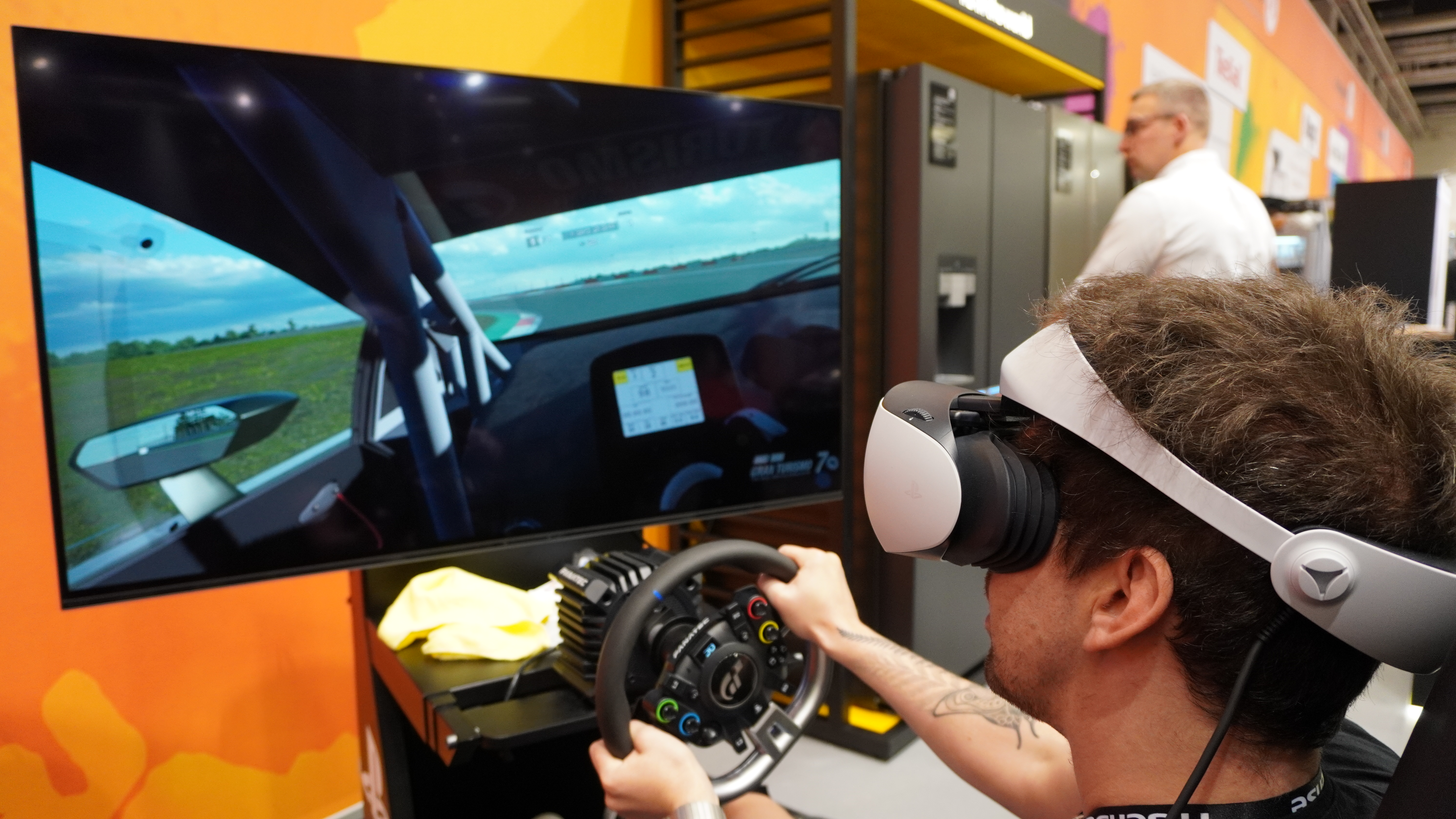
But that one issue aside (which doesn’t impact ACC), the difference between traditional sim racing and VR exceeded every expectation I had in the same way as watching the graphical transition between PS1 and PS2.
Not only is it a ridiculously cool experience to be immersed in, but it’s a useful POV too, and shout-out to the Quest 3’s spatial audio for giving you a nice surround experience to know where competitors are around you.
Allow me to leave you one critical piece of advice, though. VR racing is great and all, but just like any VR game, motion sickness and headaches are real — ramped up by several levels when you go over 200 miles per hour. Make sure you take regular breaks after every race.







